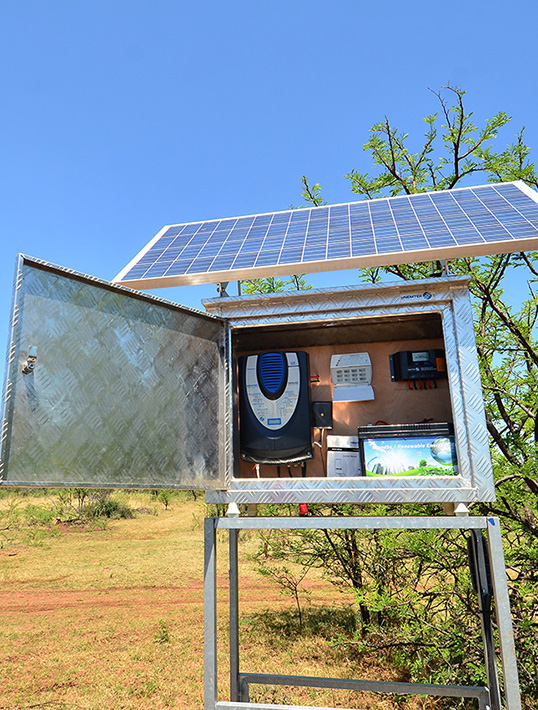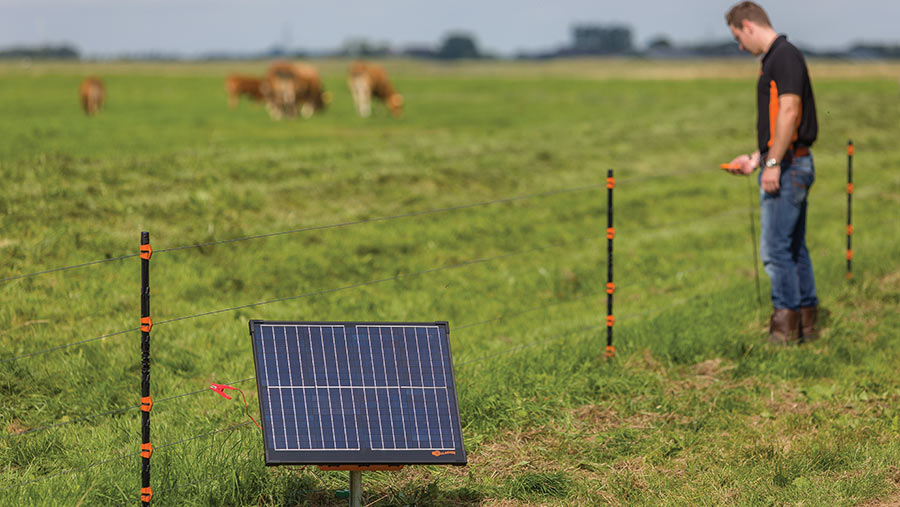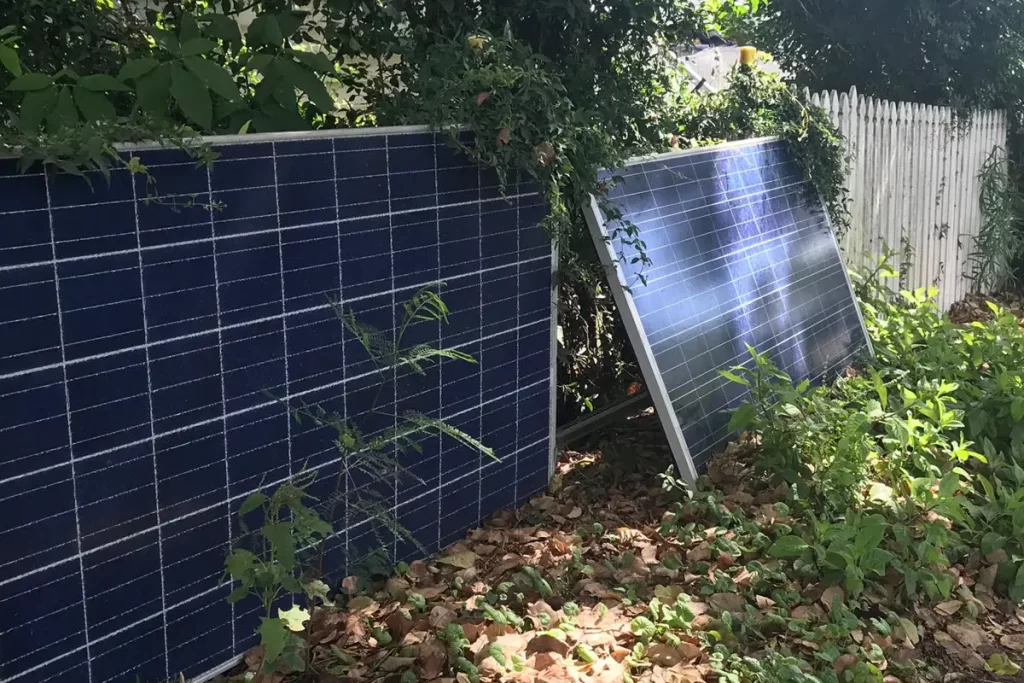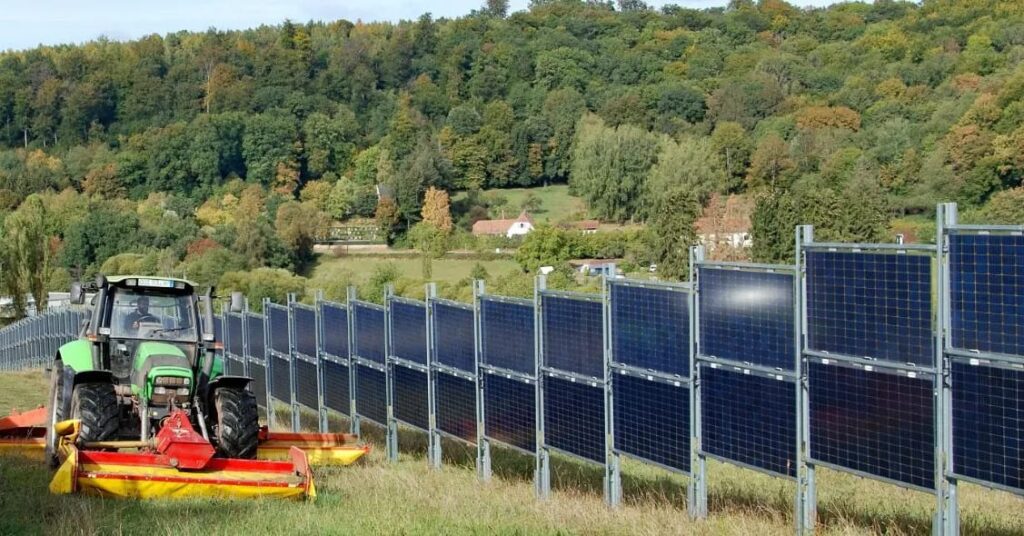Have you ever considered adding solar panels to your fence? It may sound like an unconventional idea, but it actually offers several benefits. In this article, we’ll explore the advantages of adding solar panels to your fence and how it can contribute to a more sustainable and energy-efficient lifestyle. Whether you’re looking to reduce your carbon footprint or save on electricity bills, adding solar panels to your fence is definitely worth considering.
Not only do solar panels on your fence harness the natural power of the sun, but they also provide a dual-purpose functionality. These panels can generate electricity to power your home or other electrical appliances, while also acting as a protective barrier for your property. By utilizing solar panels on your fence, you can contribute to a greener environment and take advantage of the renewable energy sources available to us. In the rest of this article, we’ll delve further into the benefits of adding solar panels to your fence and provide you with all the information you need to make an informed decision. Stay tuned!
The Benefits of Adding Solar Panels to Your Fence
Solar panels have gained immense popularity in recent years as renewable energy sources become increasingly important. With growing concerns about climate change and the need for sustainable energy solutions, solar power systems have become a popular choice for homeowners. In this article, we will explore the advantages of adding solar panels to your fence, including reduced electricity bills, environmental benefits, increased property value, enhanced security measures, and efficient lighting solutions. We will also discuss the cost benefits of solar panels, the installation process, maintenance requirements, different types of solar panels for fences, factors to consider before installation, choosing the right solar panel system, common misconceptions, and solar panel integration with existing energy systems.

The Rising Popularity of Solar Panels
Increasing interest in renewable energy sources
As the world becomes more aware of the negative impacts of traditional energy sources, there has been a significant increase in interest and demand for renewable energy sources. Solar power is one of the most abundant and accessible forms of renewable energy, making it a highly sought-after option for homeowners.
Growing demand for solar power systems
The demand for solar power systems has been steadily increasing, driven by factors such as rising electricity costs, government incentives, tax credits, and the desire to reduce carbon footprints. Homeowners are increasingly turning to solar panels as a sustainable and cost-effective solution for their energy needs.
Advantages of Solar Panels on Fences
Reduced electricity bills
One of the most significant advantages of adding solar panels to your fence is the potential for reduced electricity bills. By harnessing the power of the sun, solar panels generate electricity that can be used to power your home. This can significantly lower your dependence on the grid and result in substantial savings on your monthly energy bills.
Environmentally friendly
Solar panels are a clean source of energy that produces minimal greenhouse gas emissions compared to traditional energy sources. By using solar power, you can significantly reduce your carbon footprint and contribute to a cleaner and healthier environment for future generations.
Increased property value
Adding solar panels to your fence can also increase the value of your property. Solar-powered homes are highly desirable among eco-conscious buyers, and studies have shown that homes equipped with solar panels sell faster and at higher prices compared to homes without solar systems. Therefore, investing in solar panels can provide a long-term financial benefit.

Solar Panels for Security and Lighting
Enhanced security measures
Solar panels on fences can serve as an additional security feature for your property. The presence of visible solar panels can act as a deterrent for potential intruders, as they signal that your home is equipped with security measures. Additionally, solar-powered security systems, such as cameras and motion sensors, can be easily integrated with your solar panel system, providing enhanced security for your home.
Efficient lighting solutions
Solar panels can also be used to power outdoor lighting on your fence. This can provide efficient and sustainable lighting solutions for your yard or garden, eliminating the need for traditional lighting systems that rely on electricity. Solar-powered lights can automatically turn on at dusk and off at dawn, making them convenient and energy-efficient.
Cost Benefits
Potential savings on energy bills
Installing solar panels on your fence can lead to significant savings on your energy bills. By generating your own electricity from the sun, you can reduce or even eliminate your reliance on the grid, resulting in lower monthly energy costs. Over time, these savings can add up to substantial amounts, allowing you to recoup your initial investment.
Government incentives and tax credits
In many countries, homeowners who install solar panels are eligible for various government incentives and tax credits. These financial incentives can help offset the initial cost of installing solar panels, making them even more affordable and economically viable. It is important to research the incentives and credits available in your region to maximize the financial benefits of installing solar panels on your fence.

Easy Installation and Maintenance
Simplified installation process
Installing solar panels on your fence is relatively straightforward, especially when compared to other renewable energy systems. The panels can be mounted directly onto your fence or attached to specialized brackets. With the help of a professional installer, the installation process can be completed efficiently and effectively.
Minimal maintenance requirements
Solar panels generally require minimal maintenance. Regular cleaning to remove dust, dirt, and debris is recommended to ensure optimal performance. Additionally, it is important to inspect the panels periodically for any signs of damage or malfunctions. However, overall, solar panels have a long lifespan and require minimal upkeep, making them a hassle-free and low-maintenance energy solution.
Types of Solar Panels for Fences
Monocrystalline panels
Monocrystalline solar panels are made from a single crystal structure, usually silicon, and are known for their high efficiency. They have a sleek black appearance and perform well in various weather conditions. While monocrystalline panels tend to be more expensive than other options, they offer excellent power output and longevity.
Polycrystalline panels
Polycrystalline solar panels are made from multiple silicon crystals, resulting in a more affordable option. They have a blue color and slightly lower efficiency compared to monocrystalline panels. However, they are still a viable choice for homeowners looking to harness solar energy for their fence.
Thin-film panels
Thin-film solar panels are flexible and lightweight, making them suitable for curved or irregularly-shaped fences. They have a distinctive appearance and are generally less efficient than crystalline panels. However, their flexibility and ease of installation make them a popular option for certain fence designs.

Factors to Consider Before Installation
Available space on the fence
Before installing solar panels on your fence, it is important to assess the available space and determine if it meets the requirements for optimal panel placement. Ideally, the fence should have sufficient exposure to sunlight throughout the day to maximize energy production.
Orientation and angle for optimal sunlight exposure
The orientation and angle of the fence will impact the effectiveness of your solar panels. Ideally, the fence should face south to capture the maximum amount of sunlight. Additionally, the angle at which the panels are mounted should be adjusted according to your location’s latitude to ensure optimal sunlight exposure.
Weather conditions and shading
Consider the weather conditions and potential shading that may affect your solar panels’ performance. Shading from trees, buildings, or other structures can significantly reduce the energy output of your system. It is important to assess your fence’s surroundings and take any necessary steps to minimize shading and maximize sunlight exposure.
Choosing the Right Solar Panel System
Determining energy needs
Before choosing a solar panel system, it is essential to assess your energy needs. Evaluate your household’s average energy consumption to determine the size and capacity of the solar panel system required. This will help ensure that the system meets your electricity demands and provides optimal energy output.
Evaluating system efficiency
When selecting a solar panel system, consider the efficiency rating of the panels. Higher efficiency panels will generate more electricity in a given amount of space, making them a more effective and efficient choice. While higher efficiency panels tend to be more expensive, they can provide greater long-term benefits in terms of energy savings and return on investment.
Considering budget and long-term goals
Lastly, consider your budget and long-term goals when choosing a solar panel system for your fence. Determine how much you are willing to invest upfront and weigh it against the potential long-term savings and benefits. Additionally, consider your long-term goals for energy independence and sustainability to ensure that the chosen system aligns with your objectives.

Installation Process
Securing solar panels to the fence
The installation process of solar panels on a fence involves securely mounting the panels to the fence structure. Depending on the type of fence and panels, specialized brackets or mounting hardware may be necessary. It is crucial to ensure that the panels are properly and securely attached to the fence to withstand weather conditions and avoid potential damage.
Wiring and connection setup
After securing the panels, the wiring and connection setup must be completed. This involves connecting the panels to an inverter, which converts the generated DC (Direct Current) electricity into AC (Alternating Current) electricity that can be used to power your home. It is important to hire a certified electrician to handle the electrical connections, ensuring safety and compliance with local regulations.
Maintenance and Upkeep
Regular cleaning and inspection
To maintain optimal performance, solar panels on your fence should be regularly cleaned and inspected. Dust, dirt, and debris can accumulate on the panels, reducing their efficiency. Cleaning the panels with water and a soft brush can help remove any buildup. Inspecting the panels for any damage, such as cracks or loose connections, is also essential to address any potential issues promptly.
Addressing any damages or malfunctions
If you notice any damages or malfunctions in your solar panel system, it is crucial to address them promptly. Contact your installer or a professional technician to assess and repair any issues. Ignoring damages or malfunctions could lead to reduced energy output and potential safety hazards.
Common Misconceptions about Solar Panels on Fences
Aesthetics and design concerns
One common misconception about solar panels on fences is that they may negatively impact the aesthetics and overall design of the property. However, solar panels have come a long way in terms of design, and there are various options available that can seamlessly blend with the fence’s appearance. Additionally, the environmental and financial benefits of solar panels often outweigh any aesthetic concerns.
Effectiveness in cloudy or shaded areas
Another misconception is that solar panels are ineffective in cloudy or shaded areas. While solar panels do perform best in direct sunlight, they can still generate electricity in partial sunlight or overcast conditions. It is important to consider the shading factors and assess if they will significantly affect the energy production of your solar panel system.
Solar Panel Integration with Existing Energy Systems
Connecting solar panels to the main electrical grid
Solar panels can be connected to the main electrical grid through a process called grid-tied or grid-connected systems. This allows homeowners to use solar power while still having access to electricity from the grid when needed. Excess energy generated by the solar panels can be fed back into the grid, potentially earning homeowners credits or compensation from their utility providers.
Battery storage options
For homeowners seeking greater energy independence, battery storage options can be integrated with solar panel systems. Batteries store excess energy generated by the panels during the day, which can be utilized during periods of low sunlight or at night. This allows homeowners to further reduce their reliance on the grid and have a backup power source during power outages.
Conclusion
Adding solar panels to your fence can provide numerous benefits, including reduced electricity bills, environmental sustainability, increased property value, enhanced security measures, and efficient lighting solutions. With a wide range of advantages and cost-saving opportunities, solar panels have become an attractive option for homeowners looking to embrace renewable energy sources. By considering factors such as available fence space, sunlight exposure, and energy needs, you can choose the right solar panel system for your property. Whether you are motivated by financial savings or a desire to reduce your carbon footprint, the decision to add solar panels to your fence is a step towards a greener and more sustainable future.